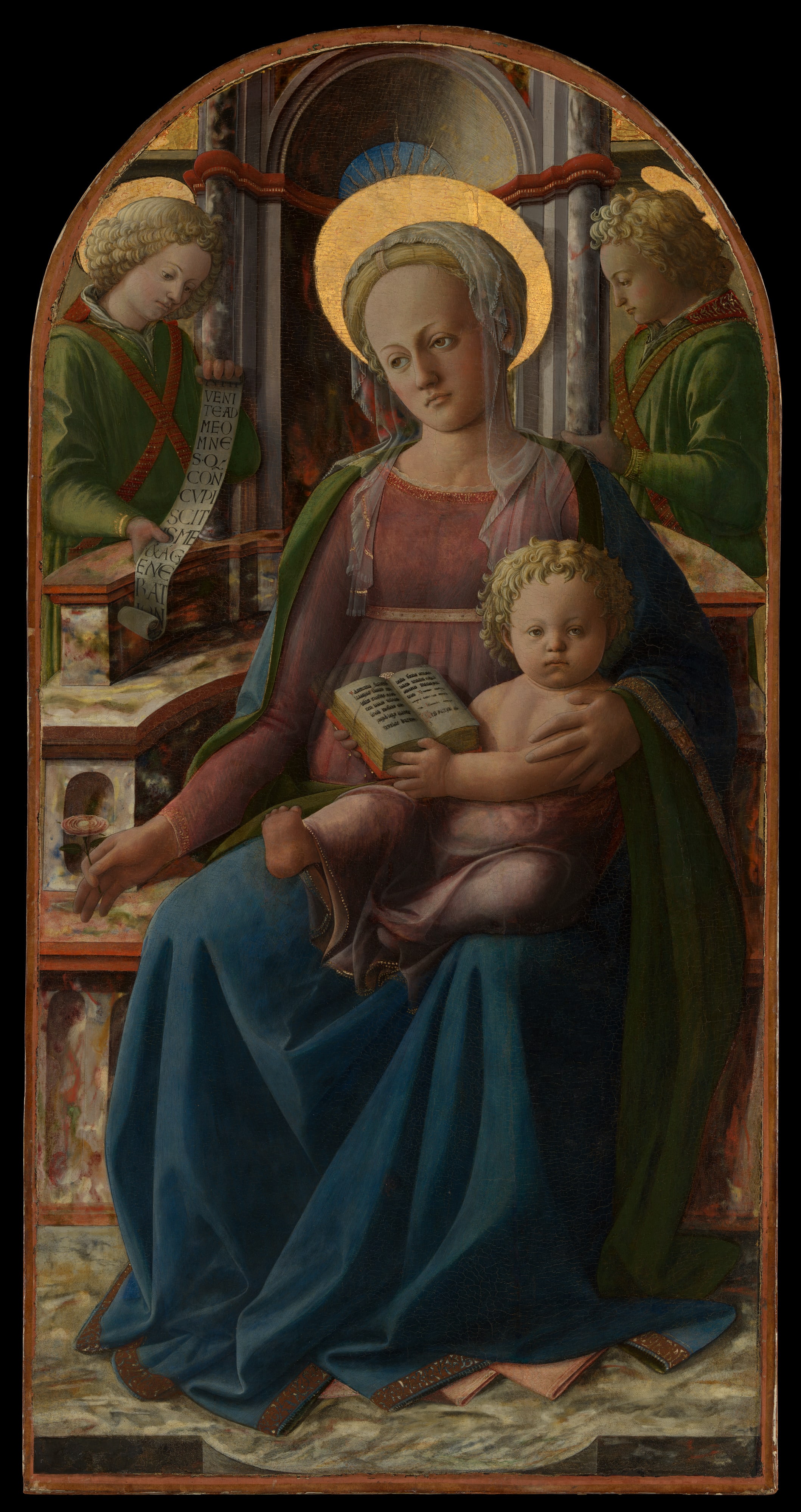Madonna and Child Enthroned with Angels
Fra Filippo Lippi
We have not been able to find much information about this work, or we believe the information we sourced needed more review.
Madonna and Child Enthroned with Angels by Fra Filippo Lippi
Fra Filippo Lippi created "Madonna and Child Enthroned with Angels" in 1445, employing tempera and gold on wood, a common medium of the time, which was later transferred from its original wooden panel. This work exemplifies the transition from the Gothic to the Early Renaissance style, characterized by its use of perspective and naturalism. Lippi's depiction of the Madonna and Child is notable for its tender humanism, a hallmark of his artistic approach that influenced subsequent generations of painters, including his pupil Sandro Botticelli. The painting's composition, with its harmonious arrangement of figures and delicate use of color, reflects Lippi's mastery in creating devotional imagery that was both spiritually resonant and visually appealing. As a Carmelite friar, Lippi's religious vocation deeply informed his artistic output, allowing him to infuse his works with a profound sense of piety and grace. His contributions to the development of Renaissance art are significant, as he helped bridge the stylistic gap between the medieval and modern worlds.
"Madonna and Child Enthroned with Angels" by Fra Filippo Lippi, created in 1445, is a tempera and gold painting originally on wood, now transferred, exemplifying the Early Renaissance style with its use of linear perspective and delicate figures. The artwork depicts the Virgin Mary and the Christ Child surrounded by angels, highlighting Lippi's skill in rendering divine subjects with a sense of human tenderness and grace.

